First came Axiom
Colquhoun Audio Laboratories Limited and Axiom Audio, its sole brand at first, were founded in 1980 by Ian Colquhoun. In 1983 the company moved from its place of birth, near Toronto, to Dwight, Ontario, about 150 miles north. This is where Colquhoun (pronounced co-hoon) grew up and where he and his company remain.
Dwight is near the northern tip of Ontario’s Muskoka region, a place known for its abundance of trees, spectacular lakes, and multimillion-dollar vacation homes, some of which are owned by A-list celebrities. According to a November 2022 article on Forbes.com, Muskoka has earned the nickname “Hamptons of the North” in some circles. The article names Tom Hanks, Steven Spielberg, Kurt Russell, Goldie Hawn, Mark Wahlberg, and even Clark Gable among those who have been spotted in the area over the years. I’ve read elsewhere that Cindy Crawford and her family have a vacation home there too. Colquhoun and his wife, Amie, live on a prime piece of land on one of the region’s best lakes.
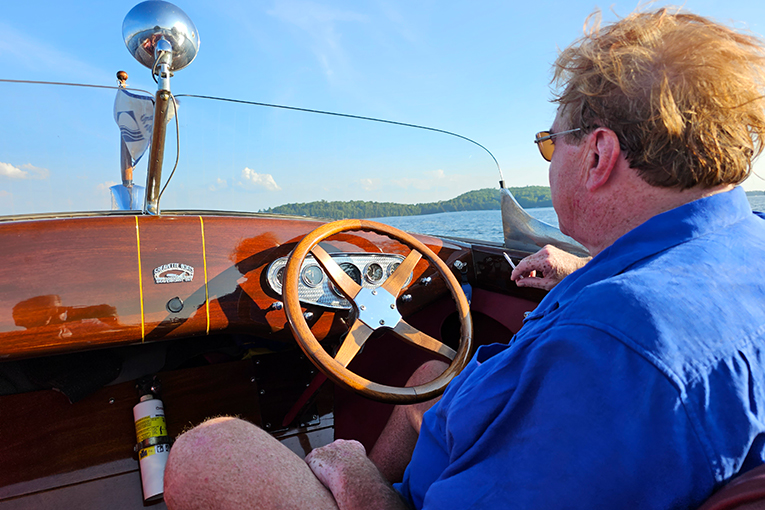 Ian Colquhoun
Ian Colquhoun
Colquhoun has been affectionately dubbed the Cowboy of Canadian Speaker Designers—partly because of his penchant for the outdoors, but mostly because of his casual demeanor and no-nonsense, get-things-done attitude. Obstacles that seem insurmountable to some are often seen as nothing but small hurdles to leap over by him.
I first met Ian Colquhoun in 2000 when I visited his factory on Axiom’s 20th anniversary. It was the first time I’d ever been to the Muskoka region, and I was struck by the beauty of the place. I was also struck by the surreal sight of a cutting-edge manufacturing facility on the ragged edge of wilderness.
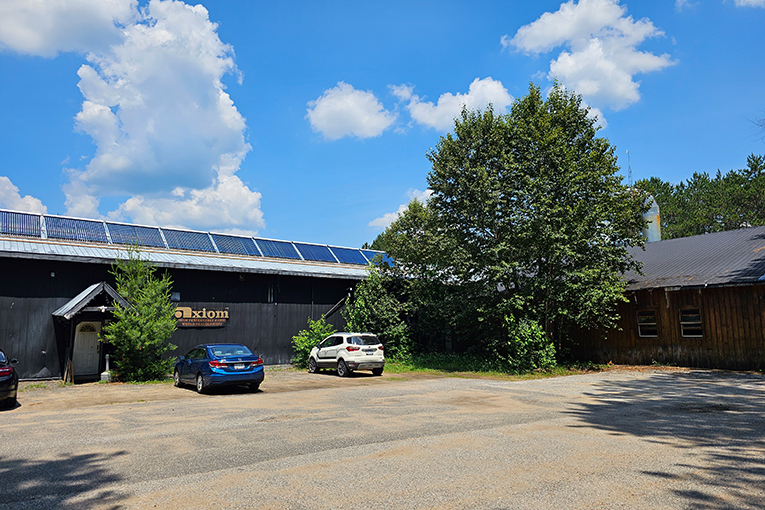 Outside the Dwight factory
Outside the Dwight factory
Another unexpected sight awaited me inside: in addition to Axiom Audio speakers, other brands’ speakers were being made there too, some for big brand names, such as DCM, Cerwin Vega, and RadioShack. Colquhoun had expanded the factory’s capabilities so greatly that by the 1990s, his company was also operating as an original equipment manufacturer (OEM). With that, you’d think Colquhoun was set for life, but the North American OEM business was dying out by the turn of the millennium. Many American and Canadian brands were moving production to China, where labor costs were lower.
Axiom did prosper, in fact; not through OEM, but rather by adopting a new business model. Shortly after the 20th-anniversary celebration, Colquhoun shifted from a dealer-based distribution model to direct online sales, a move that proved very successful. That wasn’t a sure thing at the time. The online-sales model was still in its infancy, and many wondered whether it would work. Did it ever. And Axiom Audio can be considered one of the pioneers of this business model.
That first visit to Dwight left such an impression on me that I’ve decided to visit the factory regularly, at least once a year, to keep abreast of what’s going on there and quiz Colquhoun about his plans. My most recent visit took place in early July and was the impetus behind this article.
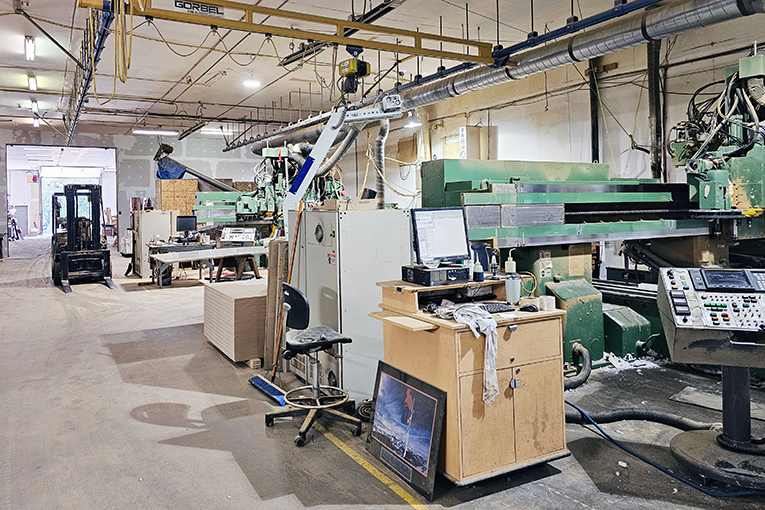 Inside the factory woodworking area
Inside the factory woodworking area
Over the two decades of its existence, I’ve seen Axiom expand its speaker line and add electronics and other products. If you look at Axiom’s website today, you’ll see a vast range of offerings. But the OEM business of the 1990s showed that Colquhoun knew his factory could be used for more than just Axiom’s products. As he’s said to me many times, “We have no trouble making stuff up here.” Sure enough, Colquhoun soon expanded Colquhoun Audio Laboratories beyond Axiom Audio.
Then came Bryston
In 2013, Colquhoun proved his factory’s external-manufacturing prowess once again when he partnered with Bryston after that iconic Canadian electronics brand decided to enter the speaker market. Bryston was founded in 1963 by Tony Bower, Stan Rybb, and John Stoneborough as a manufacturer of medical equipment. The company was bought in 1968 by John Russell, but it wasn’t until the early 1970s that Bryston shifted to hi-fi electronics. That happened after one of John Russell’s sons, Chris, began designing amplifiers that achieved appreciable commercial success. In time, Chris became the company’s CEO, while his brother Brian, who joined the company soon after Chris, eventually took on the role of president.
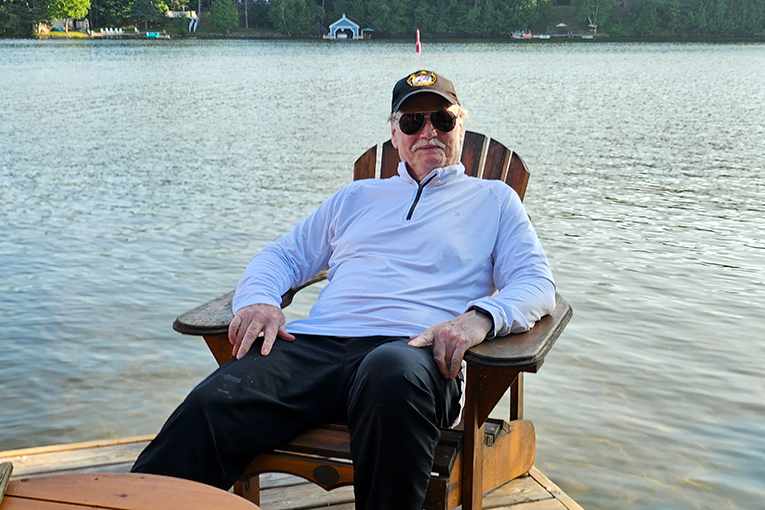 James Tanner
James Tanner
The idea to extend Bryston’s product line to speakers was the brainchild of James Tanner, who’d been with the company in sales and marketing since 1976. He was at the factory when I visited last month. Tanner’s plan was to first test the waters with a single speaker model—to assess how readily the hi-fi market would accept Bryston-branded loudspeakers. When Tanner first mentioned that idea to me, I encouraged him to talk to Colquhoun; I knew about the Dwight factory’s manufacturing capabilities. I also knew of Axiom’s impressive R&D resources, which include an anechoic chamber, a replica of the one at Canada’s National Research Council (NRC). Colquhoun was one of the first designers who went to NRC in the early 1980s to work with Dr. Floyd Toole when he was conducting groundbreaking research on the acoustics and psychoacoustics of sound reproduction in small rooms. Colquhoun will readily acknowledge that Toole’s methods for testing and blind listening helped make Axiom Audio the success it is.
Bryston did collaborate with Colquhoun on Tanner’s speaker, and the result was the Model T, which was a hit. This collaboration continued to be fruitful, and numerous passive, active, and powered speakers followed. In February 2021, the Colquhoun-Bryston partnership turned into a merger, after Brian Russell’s sudden death in September 2020. I wrote about Brian’s passing and its aftermath in October 2021. Following his brother’s death, Chris decided it was time to retire. He offered James Tanner an opportunity to buy Bryston, but Tanner didn’t think he could manage it alone. Tanner then approached Colquhoun, and Colquhoun Audio Laboratories ended up buying a majority stake in Bryston. Tanner took a minority position and assumed the role of CEO.
 A prototype Bryston Tiny T loudspeaker in the anechoic chamber
A prototype Bryston Tiny T loudspeaker in the anechoic chamber
Since Bryston was now part of Colquhoun Audio Laboratories, and Axiom and Bryston had become sister brands, one of Colquhoun’s first decisions was to move Bryston’s manufacturing from Peterborough, Ontario, to his factory in Dwight. Service and design remain in the Peterborough facility. At first it was unclear why Colquhoun wanted to move manufacturing to Dwight so quickly. That became clearer each time I visited over the past couple of years. It wasn’t only because the Dwight facility was good at “making stuff”; it was also because Colquhoun wanted to expand Bryston’s manufacturing capabilities. While Bryston was based in Peterborough, parts were outsourced to local vendors. Bryston was more of an assembler than a manufacturer.
Since the Bryston acquisition, the Dwight factory has added equipment for processes such as faceplate manufacturing and circuit-board population. The factory was already able to provide laser engraving, which Bryston had previously outsourced, and its paint shop was able to provide custom colors for Bryston faceplates. Processes for manufacturing, parts procurement, and testing were all improved, and independence from suppliers’ schedules allowed manufacturing of Bryston products to be much more efficient. But most important, Colquhoun said, manufacturing parts in-house has resulted in a dramatic improvement in quality control. He balks at the idea of sourcing parts overseas. Having direct control over parts, he maintains, more than offsets the higher labor costs and stricter manufacturing regulations in Canada compared to other countries, such as China.
 Bryston being built
Bryston being built
Suffice it to say, the acquisition of Bryston has been a success. While at the factory last month, I saw a dozen assembly technicians and products all around—some being readied for production or being built, others going through testing or awaiting shipment. Production has reached such a level, in fact, that the factory is expanding. And due to local building regulations, its growth has been upward. During my visit, factory equipment was being moved around inside so that a large section of the roof could be lifted off later this summer. Once removed, a second floor will be added to that part of the factory and a new roof will be constructed.
A couple of years ago, Colquhoun told me that he dreamed of building an “audio super factory.” That dream seems to be coming true.
Now Magnum Dynalab
The successful acquisition of Bryston meant that adding another brand to the Colquhoun Audio Laboratories stable wasn’t a huge stretch. Enter Canada’s Magnum Dynalab. Founded in 1984 by Manfred Breunig, Magnum Dynalab has offered a wide range of hi-fi electronics during its 39-year history, but it is best known for its FM tuners.
Though younger than Axiom Audio and Bryston, the matter of succession had become relevant to Magnum Dynalab too. It started with a phone call from then-owner Jim Richards to James Tanner, who’s had dealings with the brand over the years. Tanner then called Colquhoun, and the ball got rolling. On March 31, 2023, Colquhoun Audio Laboratories formally acquired Magnum Dynalab with the promise that the brand would live on and that its products would continue to be made in Canada. Manufacturing would relocate to the Dwight factory from Brampton, Ontario, a small city in the Greater Toronto Area where Magnum Dynalab had its headquarters.
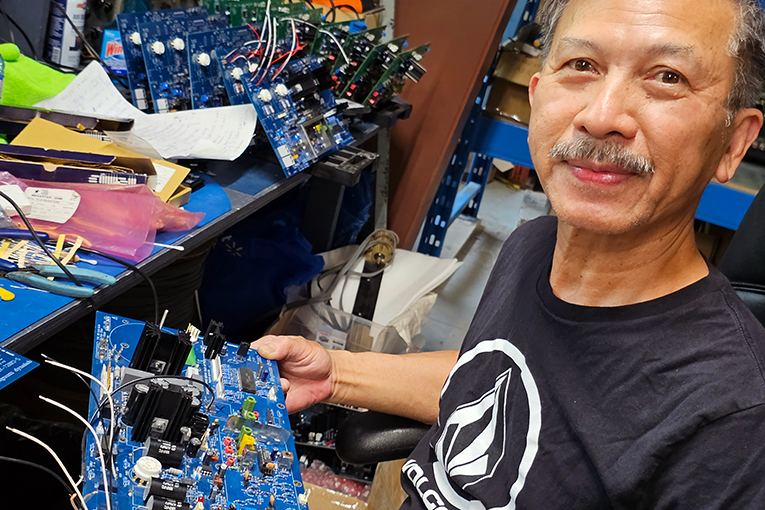 Ben Nguyen making Magnum Dynalab
Ben Nguyen making Magnum Dynalab
During my visit, I met Ben Nguyen, an assembly technician who has worked for Magnum Dynalab for about 20 years. Nguyen temporarily moved to the Dwight area to help transition Magnum Dynalab’s manufacturing processes and know-how to the Dwight factory. According to Tanner, Nguyen will continue working for Magnum Dynalab from his home near Toronto, when he moves back in the fall.
Tanner also told me that since Magnum Dynalab was much smaller than Axiom and Bryston, bringing its manufacturing in-house hadn’t been difficult. Still, Magnum Dynalab was a completely different kind of company and had its own manufacturing processes, which had to be learned by the factory technicians in Dwight and adapted to Dwight’s workflow. When fully integrated, Magnum Dynalab will undoubtedly benefit from the manufacturing capabilities of the large, sophisticated Dwight factory. The best of their current products will live on, and some of the new products that were planned for the brand’s Dynamyte line will be brought to fruition.
Who’s next?
From what I can tell, Magnum Dynalab, like Bryston, is in good hands. I believe this is important because we’re at an inflection point in the hi-fi industry. Many brands began in the 1970s and early 1980s. They are now 40 years old or older and, in many cases, are still run by their founders—but not for much longer. Without succession plans in place, some of those brands could soon disappear.
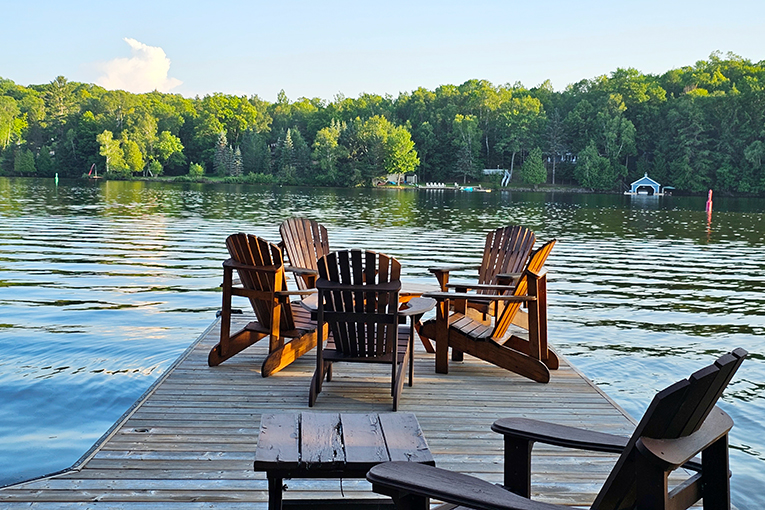 Colquhoun’s dock
Colquhoun’s dock
I have no idea whether Bryston or Magnum Dynalab had succession plans, but under the Colquhoun Audio Labs umbrella, they are in a safe place for a good while. The Dwight factory’s capacity seems nowhere near its limit, and Colquhoun has the right mindset for further expansion if he so chooses, so I wouldn’t be surprised to find more brands under his umbrella in the years to come. On my next visit to Dwight, I may have much more to report.
. . . Doug Schneider
das@soundstagenetwork.com






















